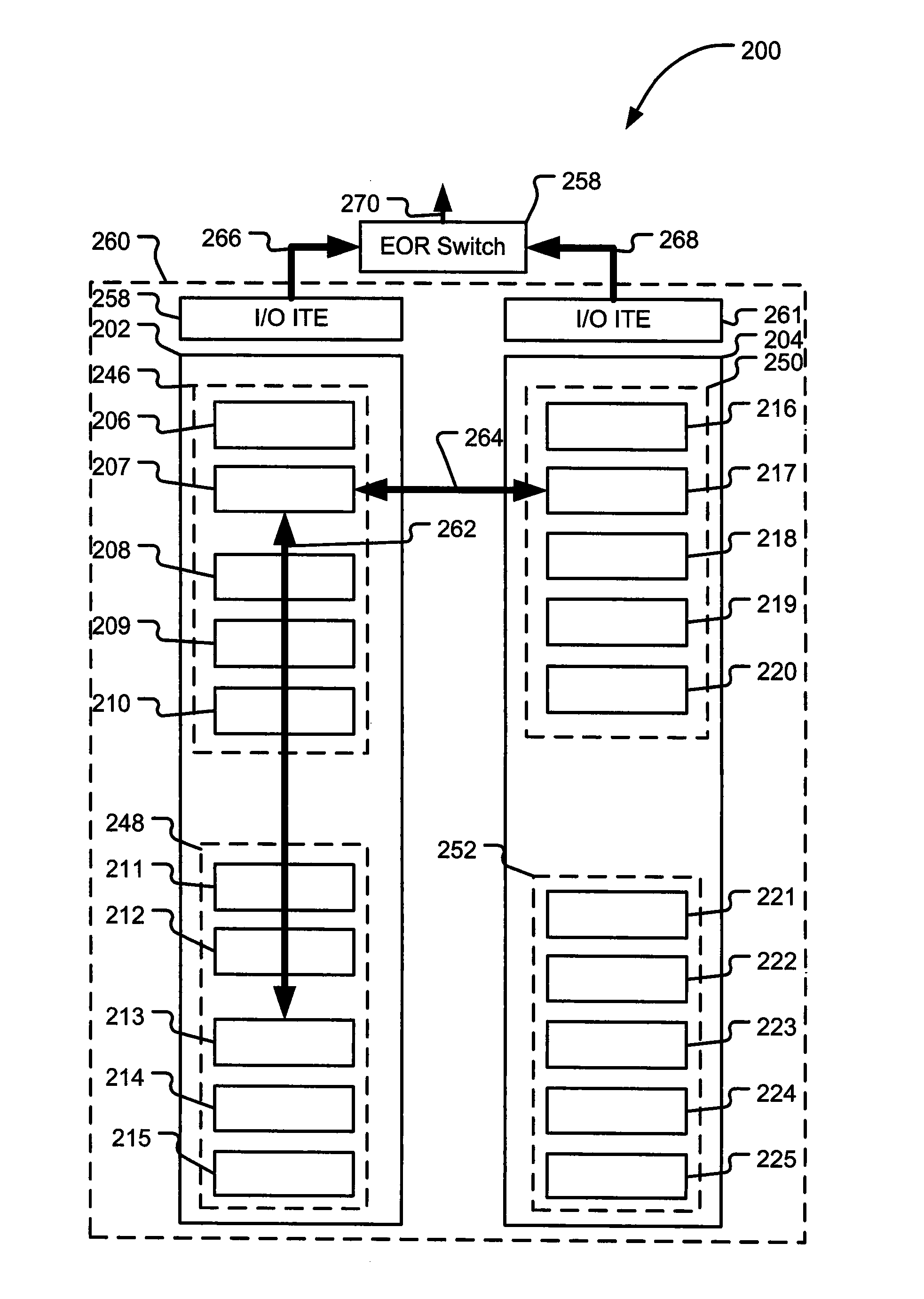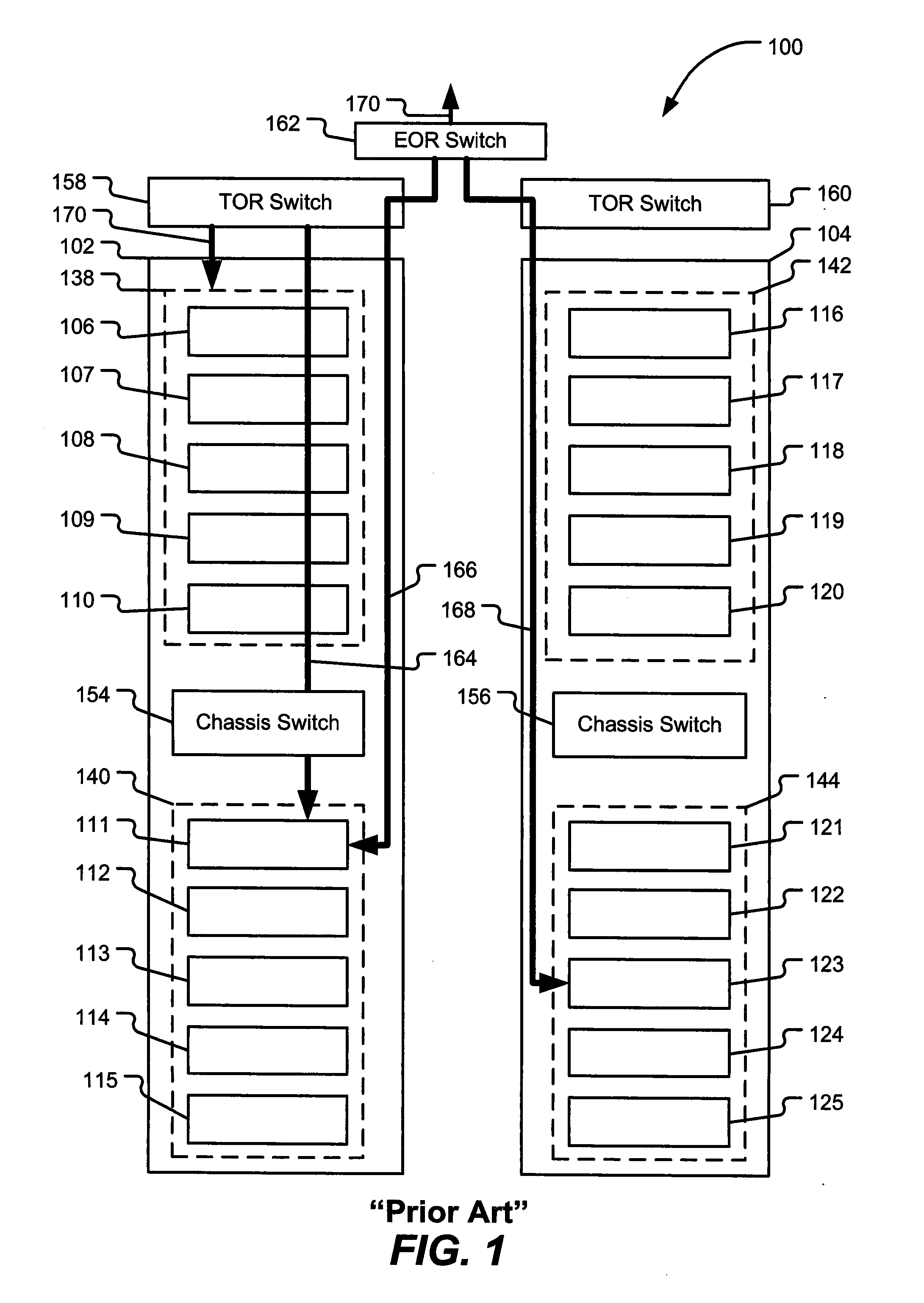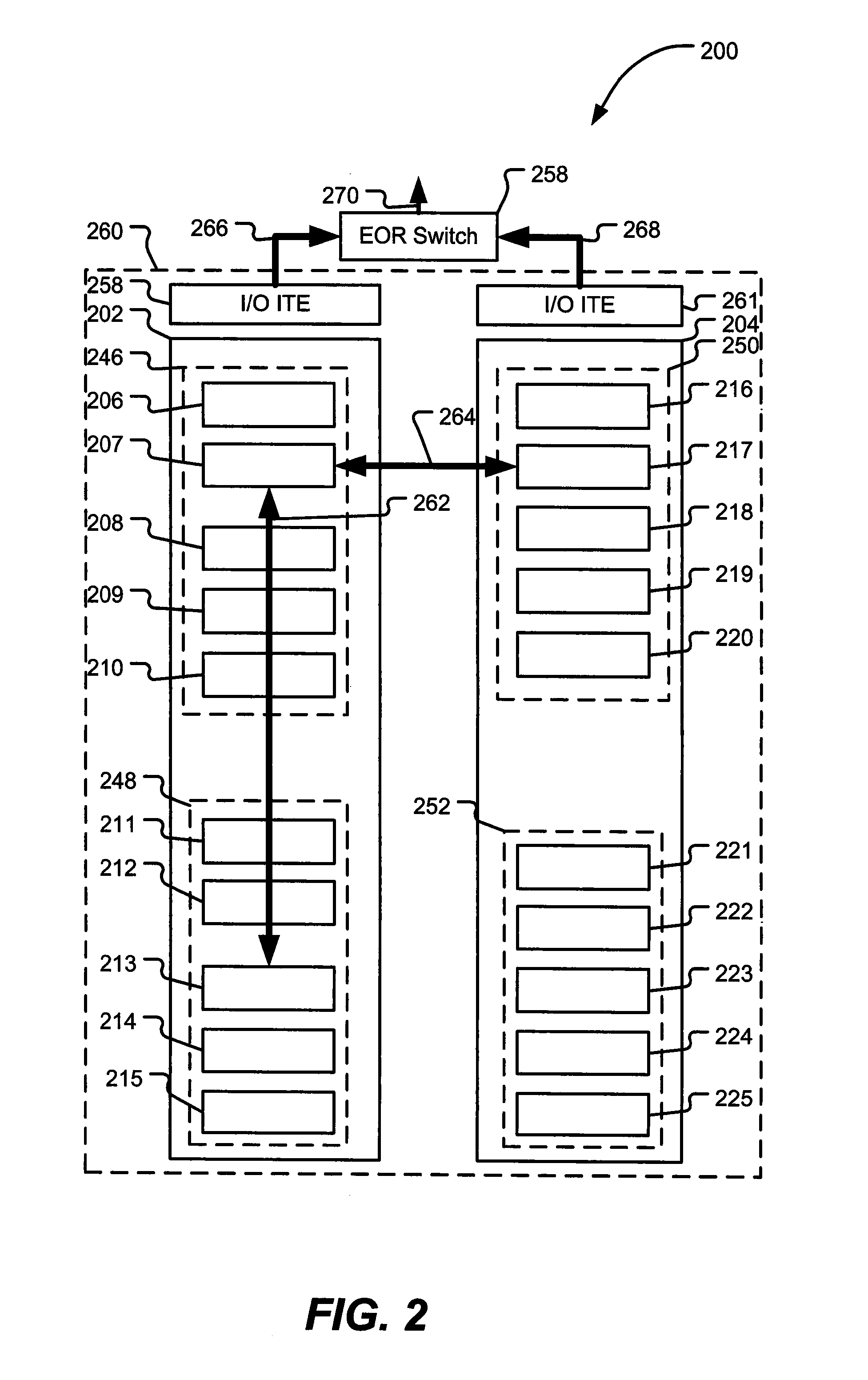Distributed Link Aggregation
a technology of distributed link and aggregation, applied in the field of data communication, can solve problems such as configuration and management challenges, server computers may experience transmission bottlenecks and delays, and may not have the capacity to allocate routing resources, so as to facilitate efficient processing, facilitate workload balancing, and reduce potential bottlenecks
- Summary
- Abstract
- Description
- Claims
- Application Information
AI Technical Summary
Benefits of technology
Problems solved by technology
Method used
Image
Examples
Embodiment Construction
[0018]Data frame communication may be improved by including a distributed aggregator component comprising multiple bridge elements positioned within a highly integrated and scalable network. The distributed bridge elements may comprise part of a distributed virtual bridge that spans multiple server computers. The bridge elements may be configured to perform Layer-2 switching functions. The bridge elements may accomplish operational and frame-forwarding decisions in parallel by distributing load balancing determinations.
[0019]Groupings of ports may be controlled and managed using the distributed virtual bridge. The port groups may span multiple, physically separated server computers to provide external bandwidth. Port group sub-link selection may be performed at the bridge elements. Port group sub-links may use the same external links. Port group and link operational status may be automatically updated within the distributed environment. The link aggregation of port groups may be dis...
PUM
 Login to View More
Login to View More Abstract
Description
Claims
Application Information
 Login to View More
Login to View More - R&D
- Intellectual Property
- Life Sciences
- Materials
- Tech Scout
- Unparalleled Data Quality
- Higher Quality Content
- 60% Fewer Hallucinations
Browse by: Latest US Patents, China's latest patents, Technical Efficacy Thesaurus, Application Domain, Technology Topic, Popular Technical Reports.
© 2025 PatSnap. All rights reserved.Legal|Privacy policy|Modern Slavery Act Transparency Statement|Sitemap|About US| Contact US: help@patsnap.com



